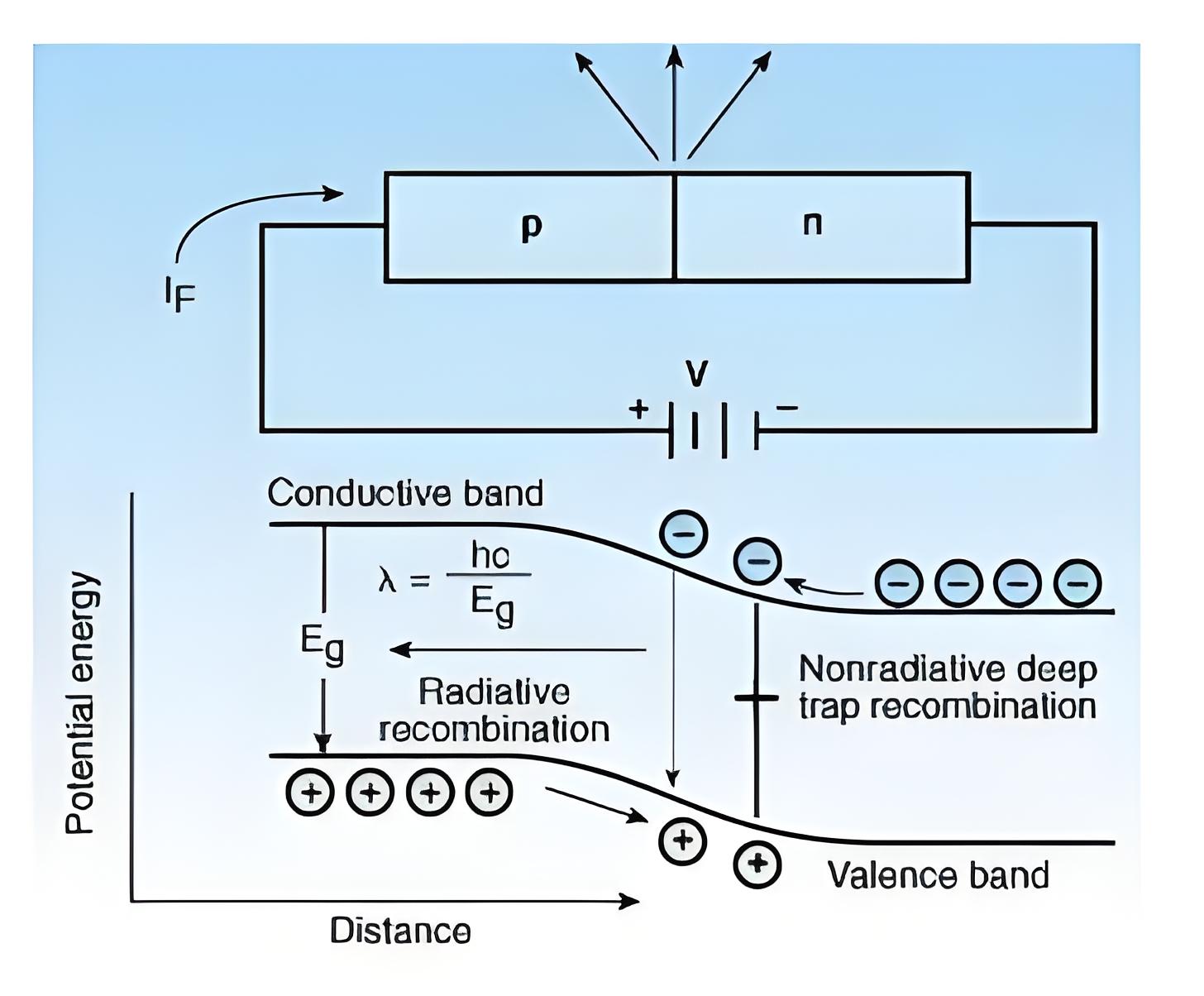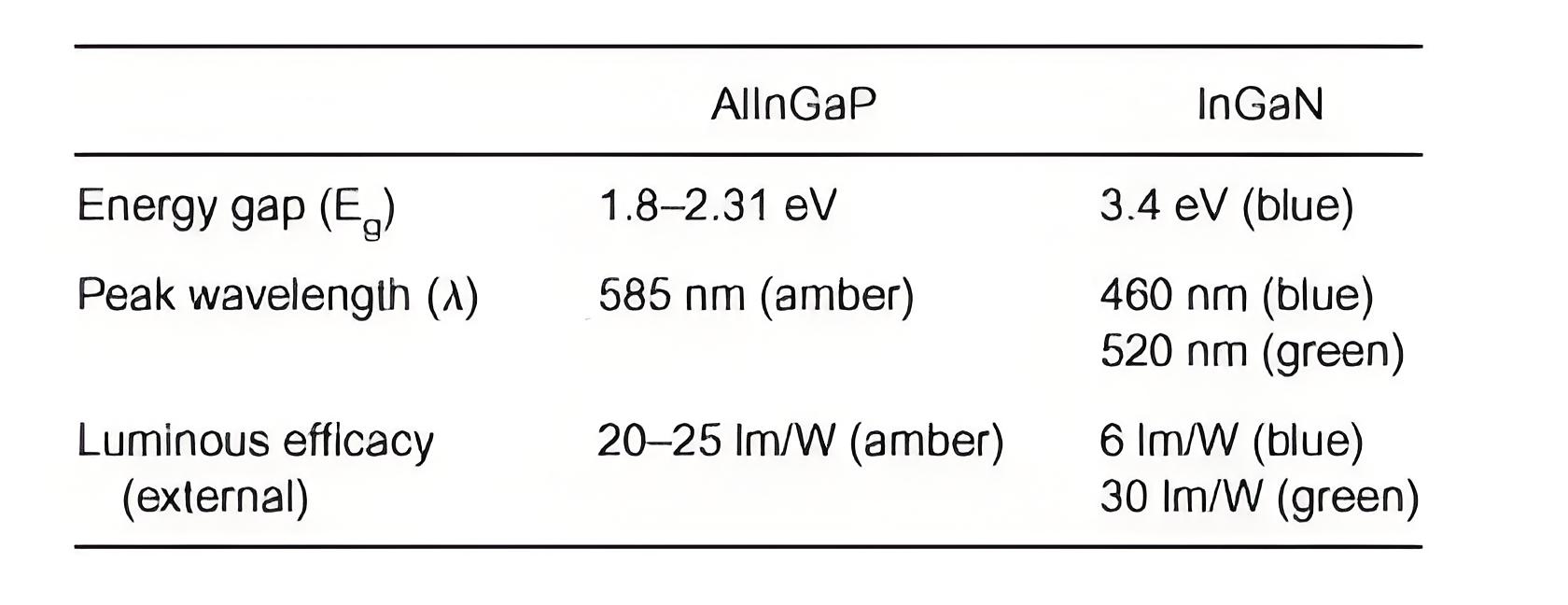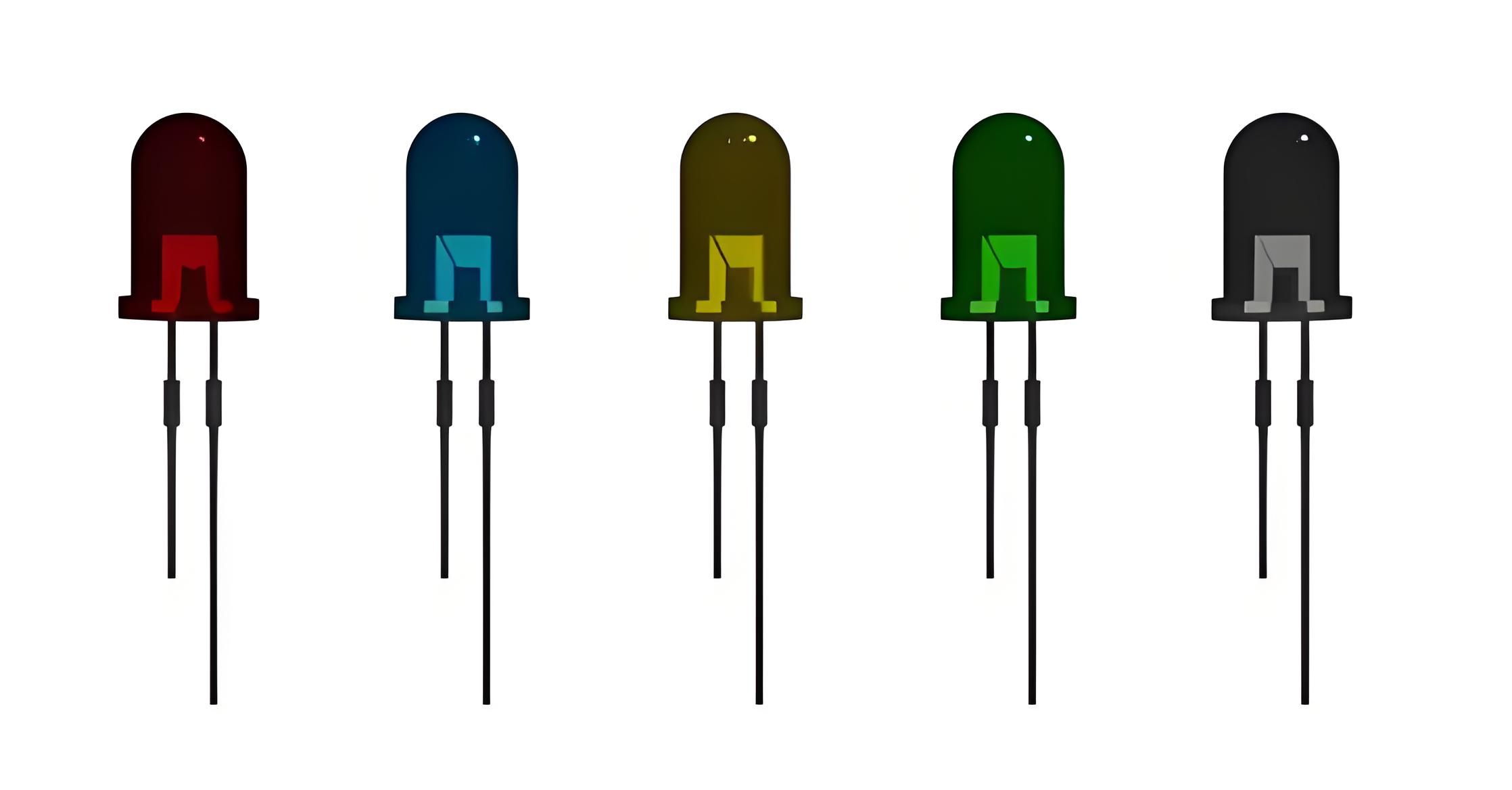What is LED?
What is LED?
LED Definition
A Light Emitting Diode (LED) is a semiconductor device that emits light when electric current flows through it.Older LED technologies used gallium arsenide phosphide (GaAsP), gallium phosphide (GaP), and aluminum gallium arsenide (AlGaAs).LEDs produce visible light through the electroluminescence effect, occurring when direct current passes through a doped crystal with a PN junction.
Doping involves adding elements from columns III and V of the periodic table. When energized by a forward biased current (IF), the p-n junction emits light at a wavelength determined by the energy gap of the active region (Eg).

Light Emitting Diode (LED) Work
When the forward biased current IF is applied through the p-n junction of the diode, minority carrier electrons are injected into the p-region and corresponding minority carrier electrons are injected into the n-region. Photon emission occurs due to electron-hole recombination in the p-region.

Electron energy transitions across the energy gap, called radiative recombinations, produce photons (i.e., light), while shunt energy transitions, called non-radiative recombinations, produce phonons (i.e., heat). The luminous efficacies of typical AlInGaP LEDs and InGaN LEDs for different peak wavelengths are shown in the table below.
LED efficacy is affected by the light generated at the junction and losses from re-absorption as light exits the crystal. Due to the high refraction index of most semiconductors, much of the light reflects back into the crystal, diminishing its intensity before it can escape. The efficacy expressed in terms of this ultimate measurable visible energy is called the external efficacy.
The phenomenon of electroluminescence was observed in the year 1923 in naturally occurring junctions, but it was impractical at that time due to its low luminous efficacy in converting electric energy to light. But, today efficacy has increased considerably and LEDs are used not only in signals, indicators, signs, and displays but also in indoor lighting applications and road lighting applications.
Color of an LED
The color of an LED device is expressed in terms of the dominant wavelength emitted, λd (in nm). AlInGaP LEDs produce the colors red (626 to 630 nm), red-orange (615 to 621 nm), orange (605 nm), and amber (590 to 592 nm). InGaN LEDs produce the colors green (525 nm), blue green (498 to 505 nm), and blue (470 nm). The color and forward voltage of AlInGaP LEDs depend on the temperature of the LED p-n junction.
As the temperature of the LED p-n junction increases, the luminous intensity decreases, the dominant wavelength shifts towards longer wavelengths, and the forward voltage drops. The variation in luminous intensity of InGaN LEDs with operating ambient temperature is small (about 10%) from − 20°C to 80°C. However, the dominant wavelength of InGaN LEDs does vary with LED drive current; as the LED drive current increases, dominant wavelength moves toward shorter wavelengths.

If you’re looking to use colored LEDs for an electronics project, the best Arduino starter kits include a variety of colored LEDs.
Dimming
LEDs may be dimmed to give 10% of their rated light output by reducing the drive current. LEDs are generally dimmed using Pulse Width Modulation techniques.
Reliability
The maximum junction temperature (TJMAX) is crucial for an LED’s longevity. Exceeding this temperature typically damages the encapsulated device. LED lifespan is measured by Mean Time Between Failures (MTBF), calculated by testing numerous LEDs at a standard current and temperature until half fail.
White LEDs
White LEDs are being manufactured now using two methods: In the first method red, green, and blue LED chips are combined in the same package to produce white light; In the second method phosphorescence is used. Fluorescence in the phosphor that is encapsulated in the epoxy surrounding the LED chip is activated by the short-wavelength energy from the InGaN LED device.
Luminous Efficacy
Luminous efficacy of LED is defined as the emitted luminous flux (in lm) per unit electrical power consumed (in W). Blue LEDs have a rated internal efficacy in the order of 75 lm/W; red LEDs, approximately 155 lm/W; and amber LEDs, 500 lm/W. Taking into consideration losses due to internal re-absorption, the luminous efficacy is on the order of 20 to 25 lm/W for amber and green LEDs. This definition of efficacy is called external efficacy and is analogous to the definition of efficacy typically used for other light source types.
The Electricity Encyclopedia is dedicated to accelerating the dissemination and application of electricity knowledge and adding impetus to the development and innovation of the electricity industry.













